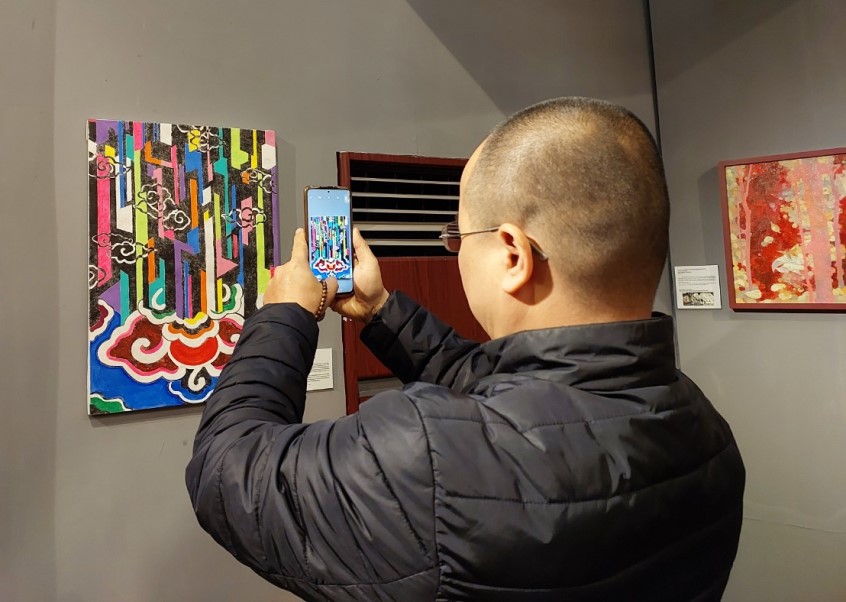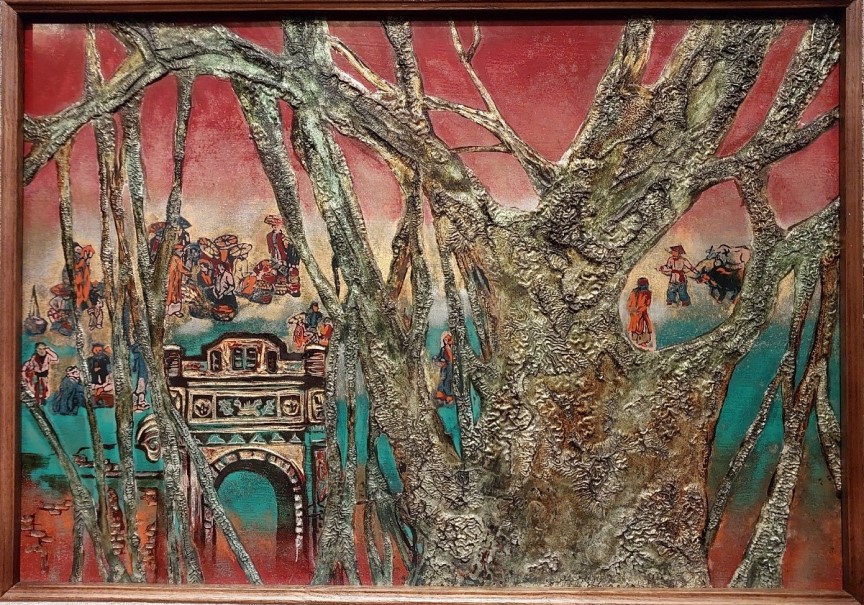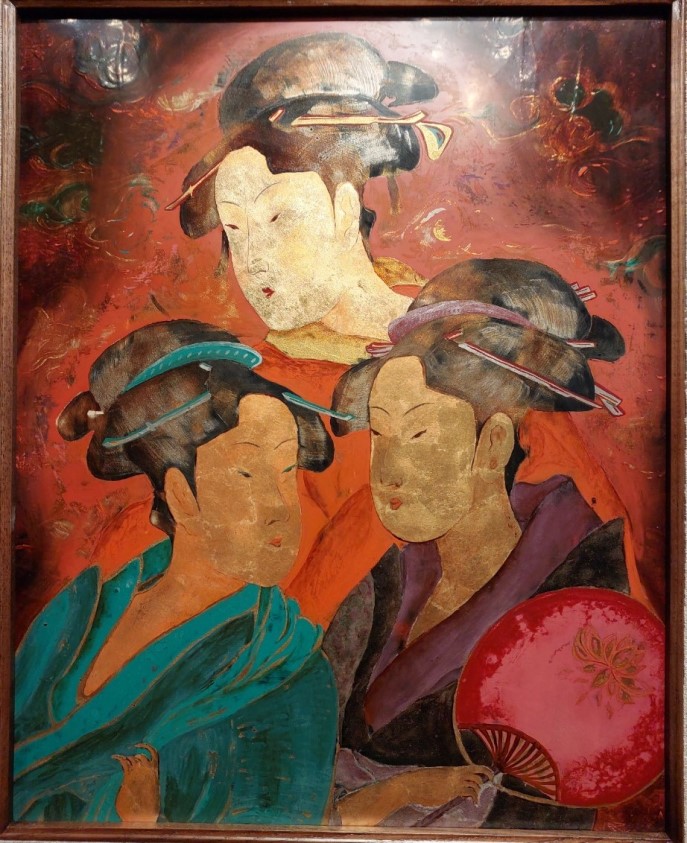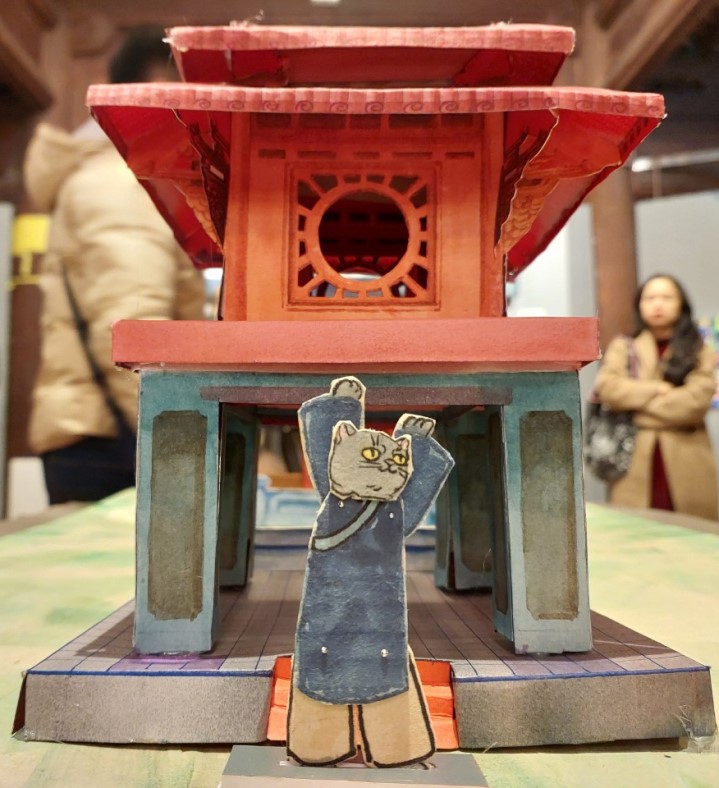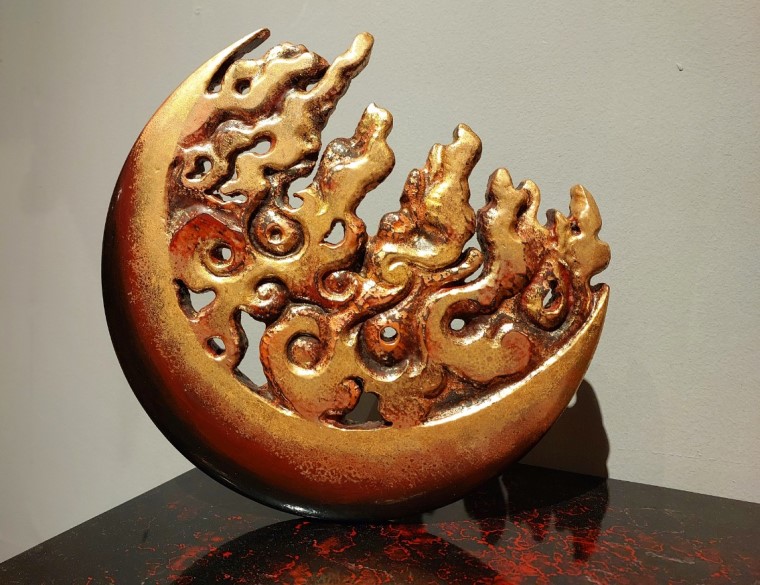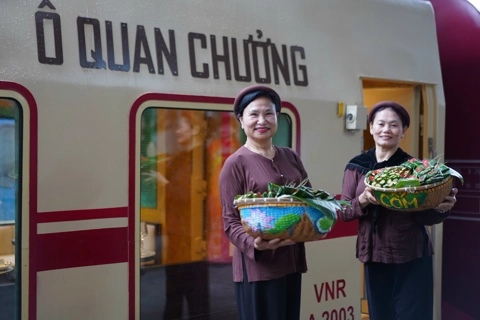Young Vietnamese artists inspired by Japanese woodblock prints
Inspired by Japanese woodblock prints, young Vietnamese artists bring a personal touch to their work, creating an artistic interplay between Vietnam and Japan.
Thirty-eight works by young Vietnamese artists are on display at the Temple of Literature, showing unique individual creations inspired by Japanese ukiyo-e woodblock prints.
The exhibition "Dialogue with Japanese Ukiyo-e Woodblock Prints" opened on January 23.
Produced during the Edo period (1615-1868), these colourful woodblock prints depict scenes from everyday life in Japan. Ukiyo-e literally means "pictures of the floating world". The "floating world" referred to the licensed brothel and theatre districts in Japan's major cities during the Edo period.
| The exhibition features 38 works by Vietnamese artists. Photo: Ngo Minh/The Hanoi Times |
The ukiyo-e style was developed in 1765 and remained popular until the last decades of the Meiji period (1868-1912). While only the wealthy could afford paintings by the artists of the time, ukiyo-e prints were enjoyed by a wide audience of commoners because they could be produced relatively cheaply and in large numbers.
Initiated by artist and lecturer Nguyen The Son at Hanoi National University, with the support of the Japan Foundation in Hanoi, 34 young artists studying at Vietnam University of Fine Arts joined the project "From Tradition to Tradition" to create works inspired by ukiyo-e woodblock prints.
Their works reflect the unique features of the cultural life of the Vietnamese people, expressed through the contemporary perspective of young artists.
They combined the inspiration and research of ukiyo-e woodblock prints with the quintessential values of traditional Vietnamese art materials such as silk, lacquer and do (poonah) paper.
Speaking at the opening ceremony, artist Nguyen The Son, curator of the exhibition, said this was the result of the artists' tireless efforts in the journey to promote artistic practice inspired by traditional cultural and artistic values of Vietnam and other cultures.
"The practice of tradition-inspired creativity is the driving force behind personal creations, which contributes to motivating today's young artists in inheriting the spirit of traditional art, so that we can be more encouraged to nurture our passion for artistic creativity," Son said.
According to Le Xuan Kieu, Director of the Van Mieu-Quoc Tu Giam Center for Cultural and Scientific Activities, the exhibition aims to promote the beauty and uniqueness of traditional Vietnamese art materials to a large number of people, especially the younger generation and international tourists.
It is also an opportunity to introduce to the public cultural products that have emerged from the process of discovering traditional artistic values through transnational cultural dialogues.
The exhibition has the professional support of many experts: Researcher, artist Tran Hau Yen The, visual artist Trieu Minh Hai, artist Pham Khac Quang, artist Tue Thu, artist Hong Nhung (Zó Project), design artist Truong Thuy.
The exhibition will last until March 12 at the Van Mieu-Quoc Tu Giam Special National Monument.
Some artworks at the exhibition:
| The village, lacquer painting with carving technique by Nguyen Ha Anh. |
| Three Beauties of the Present, lacquer painting by Le Thi Hai Yen. |
| Student Meow Meow by Pham Ngoc Ha and Bui Thao My. |
| The Universe of Balance, lacquered wood sculpture by Nguyen Ha Anh. |

